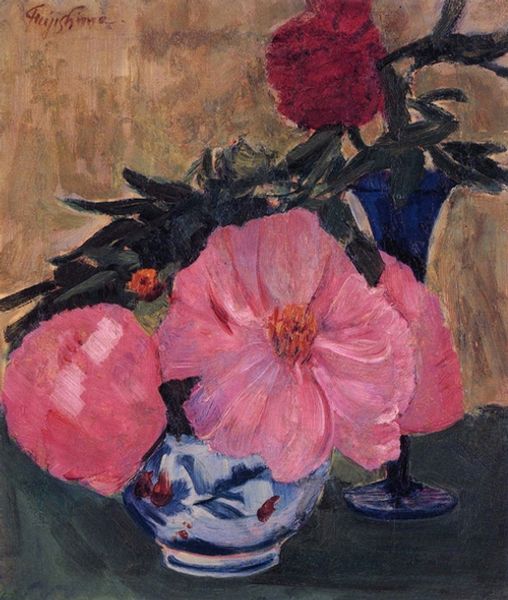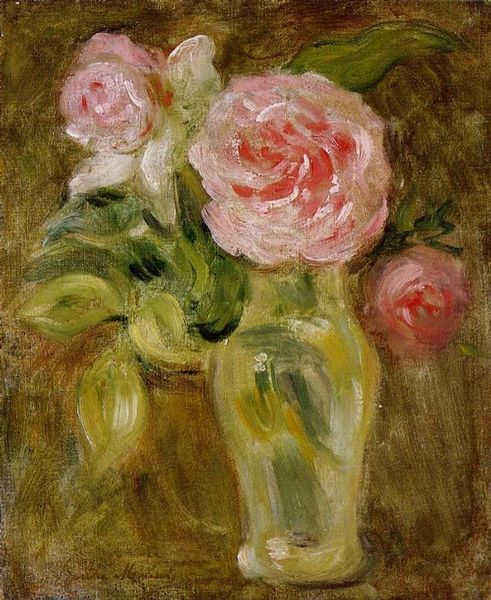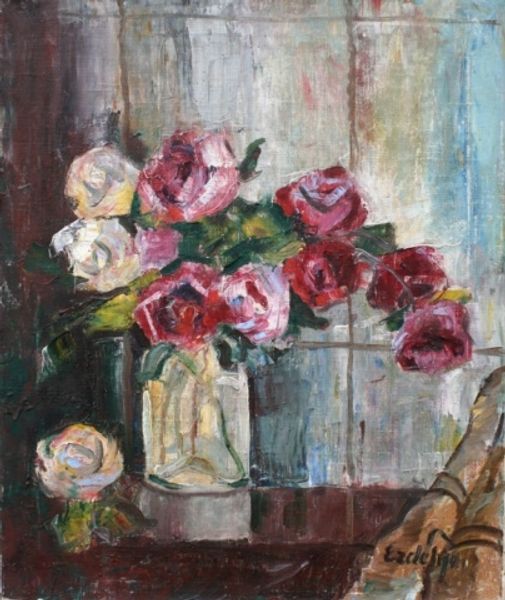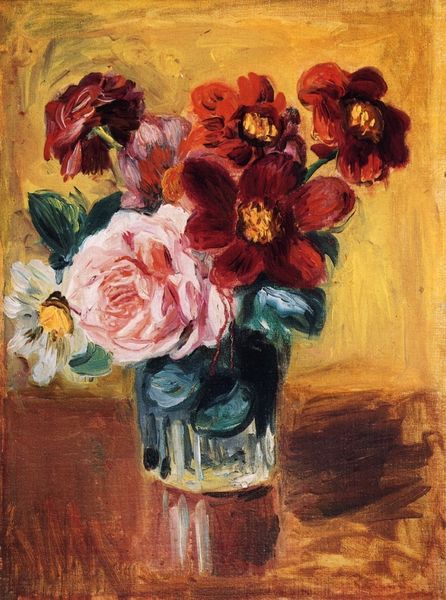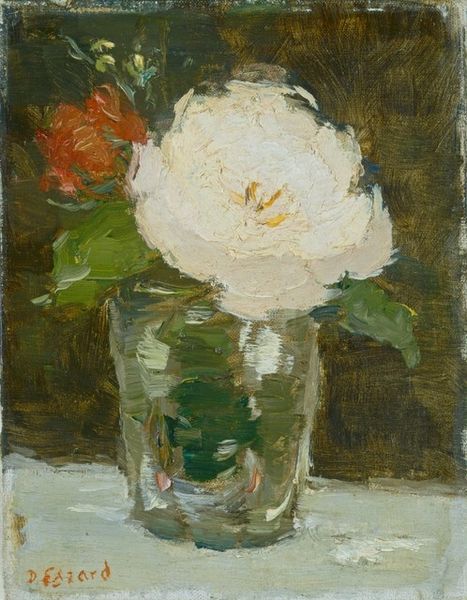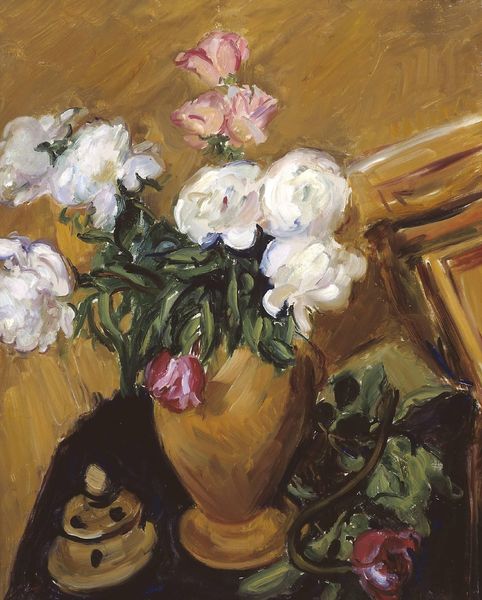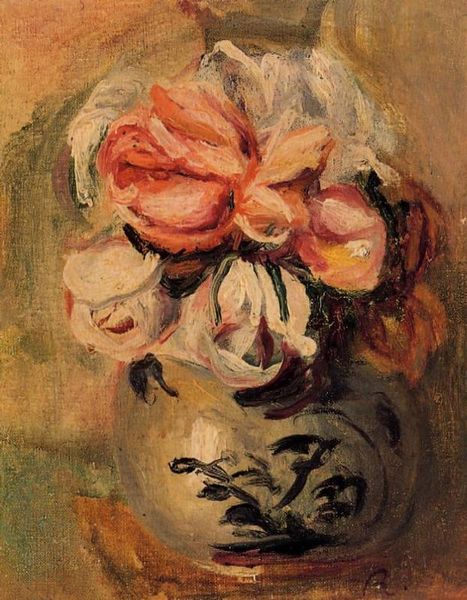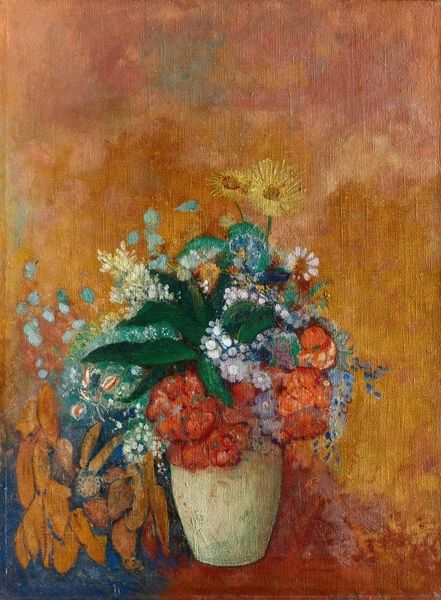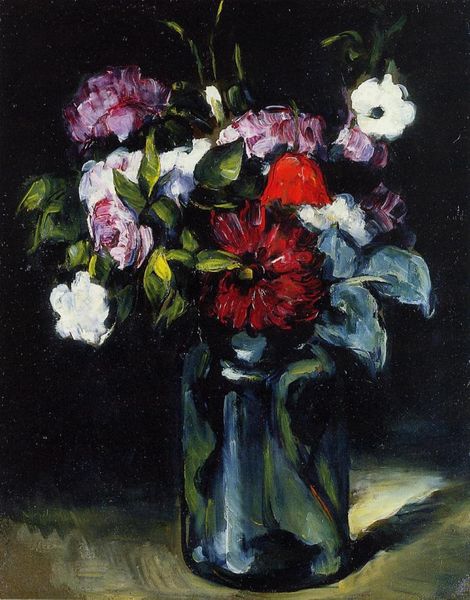
painting, oil-paint
#
still-life
#
painting
#
impressionism
#
oil-paint
#
flower
#
oil painting
#
plant
#
post-impressionism
Copyright: Public domain
Paul Cézanne painted this oil on canvas still life, “Dark Blue Vase,” at an unknown date. Cézanne was working during a time of great social and artistic change in France. He was part of a generation of artists who were questioning the established norms of academic painting, which had long been promoted and controlled by institutions like the Salon and the École des Beaux-Arts. Rather than depicting historical or mythological scenes, Cézanne focused on everyday subjects like this vase of flowers. But even in these simple subjects, he sought to challenge traditional artistic conventions. Notice how he flattens the space and distorts the perspective, creating a sense of tension and unease. The dark vase contrasts with the delicate pink flowers, perhaps reflecting the social and political tensions of the time. To truly understand Cézanne, we can look to letters, exhibition reviews, and the writings of his contemporaries. By placing his work in its social and institutional context, we can gain a richer appreciation of its meaning and significance.
Comments
No comments
Be the first to comment and join the conversation on the ultimate creative platform.
